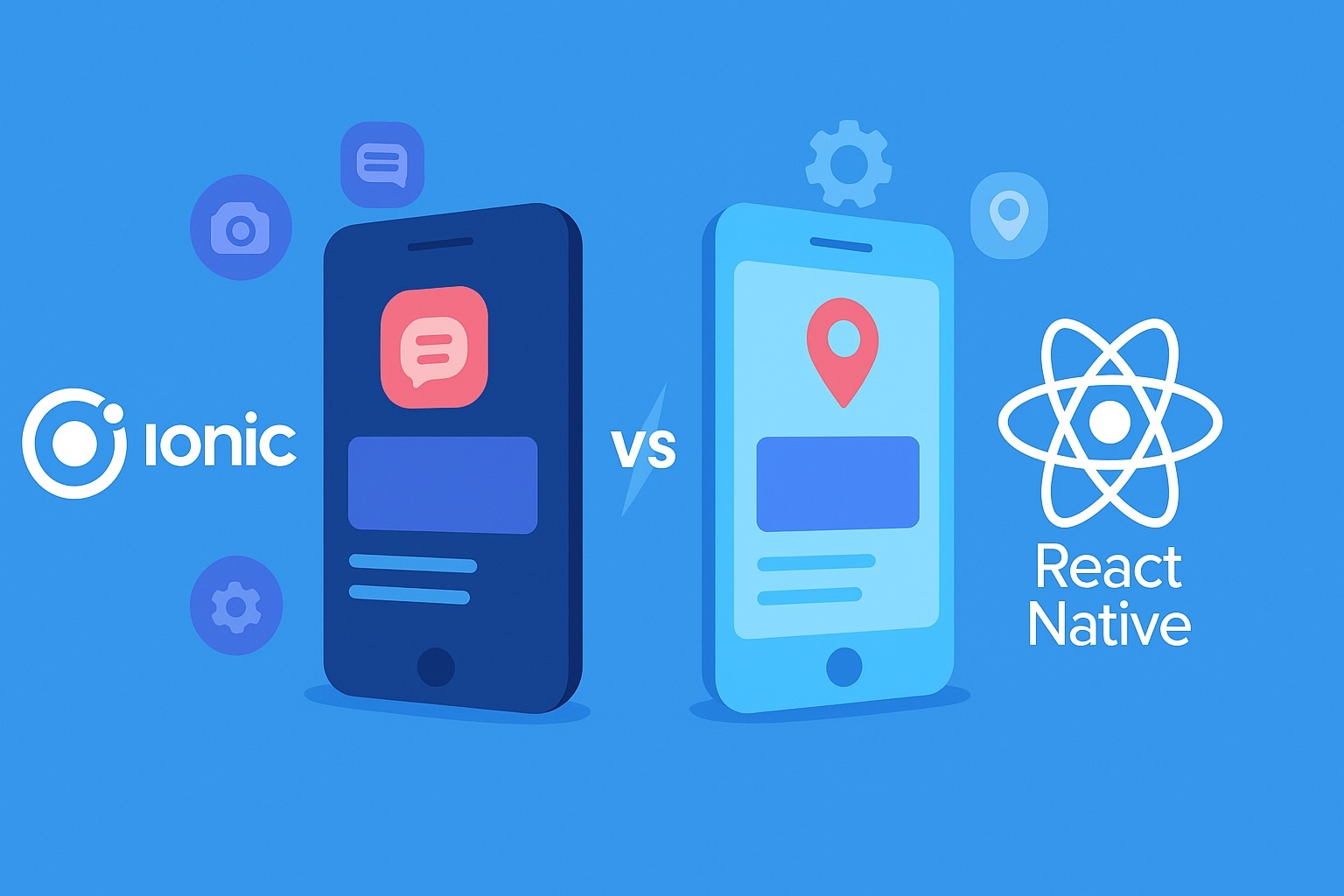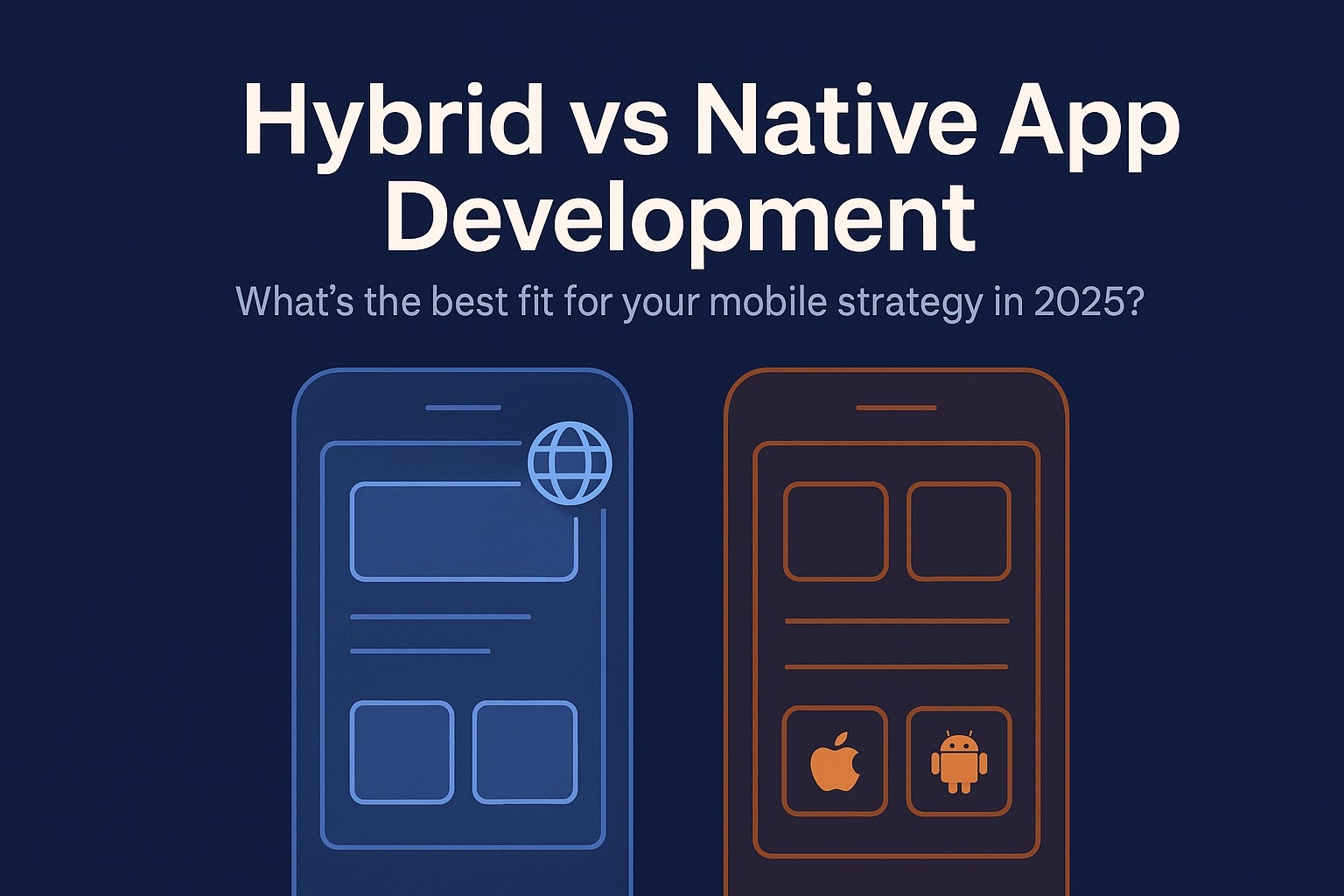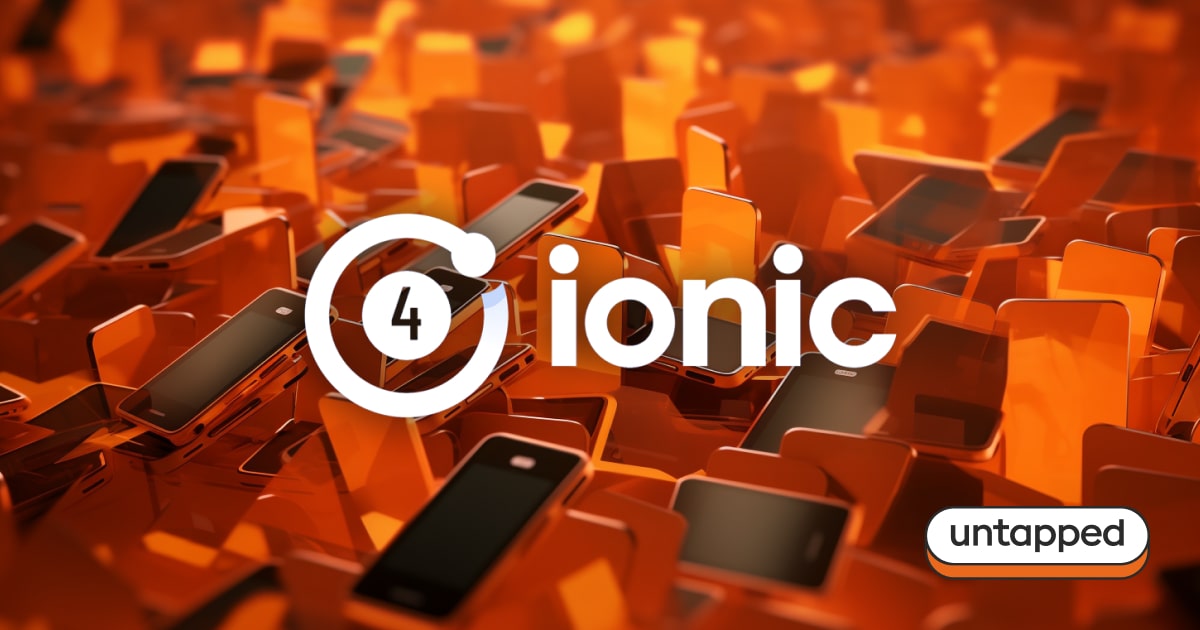Ionic React vs React Native: Which Should You Choose in 2025?
This post breaks down the differences between Ionic React and React Native in plain English. We’ll cover performance, flexibility, development experience, native capabilities, community support, and more.
Performance: Native Muscle vs. Web Speed
React Native renders real native components. That means smooth animations, better gestures, and that silky "feels like iOS" vibe. Ideal if you're building high-performance apps—think social, streaming, or gaming.
Ionic React uses web tech (HTML, CSS, JS) inside a WebView. It's not native, but it’s fast enough for 90% of business apps - especially content-heavy or form-based platforms.
Building an admin panel, ecommerce app, or marketplace? Ionic won’t break a sweat.
Need high-frame-rate animations? React Native takes the lead.
UI Components and Customisation
React Native uses a native-style component set that mimics Android and iOS design patterns. You get a consistent UI but need to handle platform-specific behaviour yourself. Custom UI often involves writing native code or using third-party libraries.
Ionic React ships with a full suite of ready-made UI components that follow mobile design standards, work on every screen size, and support dark mode, gestures, and animations. It’s optimised for web developers, which means more control using HTML/CSS and fewer headaches when styling across platforms.
Access to Native Features
React Native includes built-in APIs for core device functionality—camera, GPS, accelerometer, etc.—and lets you write native modules in Java/Swift when needed. However, working with advanced APIs sometimes involves writing platform-specific code or relying on third-party modules that may not be actively maintained.
Ionic React uses Capacitor, a modern native runtime that provides a consistent API layer and plugin system. Capacitor plugins let you call native functionality using a simple JavaScript interface. You can also write your own plugins or drop in native code if you need something custom.
Developer Experience
Both frameworks use React, so you'll feel at home if you're already comfortable with it.
Speed to market? Ionic wins.
Pixel-perfect customisation? React Native gives you the tools (and the homework).
With Ionic React:
- You use the same tools and libraries as standard web apps.
- You can reuse code across web, mobile, and even desktop (with Electron).
- Styling is straightforward thanks to CSS.
With React Native:
- You’re still in the React world, but the styling system is different (no CSS, just JavaScript objects).
- Web developers may find the native quirks take time to learn.
- Some tooling and debugging requires platform-specific knowledge.
Code Reuse and Portability
This is where Ionic React really shines. You can share one codebase across mobile (iOS/Android), web, and desktop. That makes it ideal for startups or internal tools where speed and cost matter.
React Native is focused on mobile. You can make it work on web using solutions like React Native Web, but it's more complex and not always 1:1.
Ecosystem and Community
React Native is backed by Meta and used in apps like Facebook, Instagram, Shopify, and Discord. The ecosystem is huge and there's a library for just about everything.
Ionic React is backed by Ionic, a company focused entirely on empowering cross-platform developers. The ecosystem includes Capacitor, Ionic Framework, enterprise plugins, authentication, and cloud services. It's especially popular in enterprise environments and among web teams.
When to Choose Ionic React
Pick Ionic React if:
- You want one codebase across web and mobile.
- Your team has web development skills.
- You care about quick time-to-market and maintainability.
- You're building a business tool, marketplace, dashboard, or content app.
- You want flexibility without getting deep into native code.
When to Choose React Native
Pick React Native if:
- You need maximum performance and native feel.
- Your app is animation or gesture-heavy.
- You plan to build mobile-only or mobile-first experiences.
- You’re comfortable working with native modules or hiring a mobile specialist team.
- You're building a social, media, or entertainment app.
Choosing between Ionic React and React Native isn’t about picking a winner. It’s about picking what works best for your product and your team. If you want speed, simplicity, and the power of the web, Ionic React gives you everything you need. If you’re after that polished native feel and don't mind managing platform-specific complexity, React Native is still a great choice.
Frequently Asked Questions
Is Ionic React slower than React Native?
For high-performance, graphic-heavy apps, React Native may be slightly faster. But for most apps, especially business tools and content-focused platforms, Ionic React performs well.
Can I access native device features with Ionic React
Yes. Capacitor gives you access to device features like camera, GPS, push notifications, and more, with an easy plugin system.
Do I need to learn Swift or Java to use React Native?
Not always, but for some advanced features or native integrations, it helps. With Ionic React and Capacitor, most things can be done in JavaScript.
Which is better for web-to-mobile projects?
Ionic React is better suited to extending web apps to mobile. Its component model, routing, and CSS system are familiar to web developers.
What about support and maintenance?
Both are well-maintained. React Native is supported by Meta and a huge open-source community. Ionic is backed by a company dedicated to cross-platform tooling and provides enterprise-grade support.






%20Hybrid%20Frameworks.jpg)
.jpg)











Any thoughts?
Leave a comment